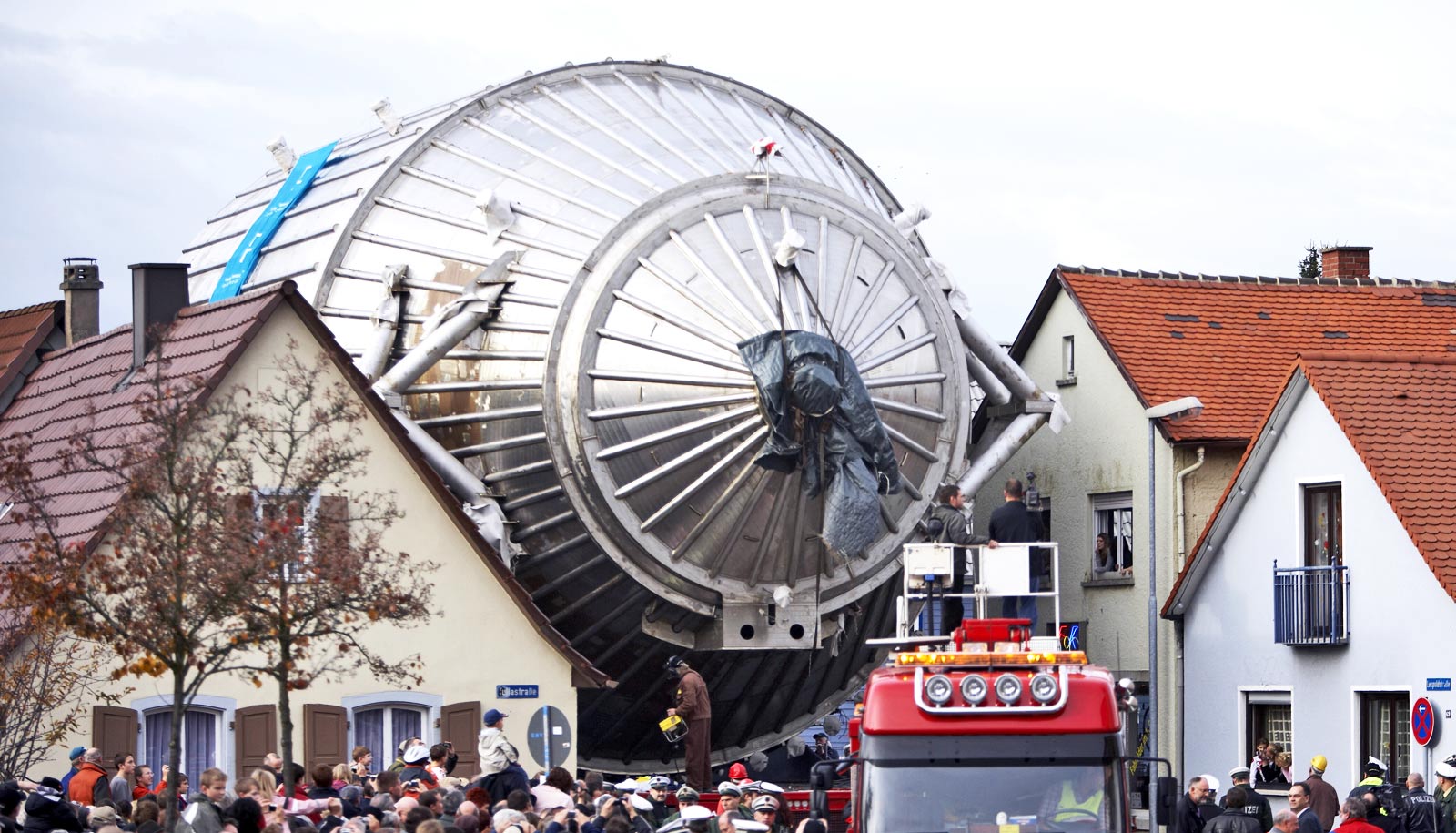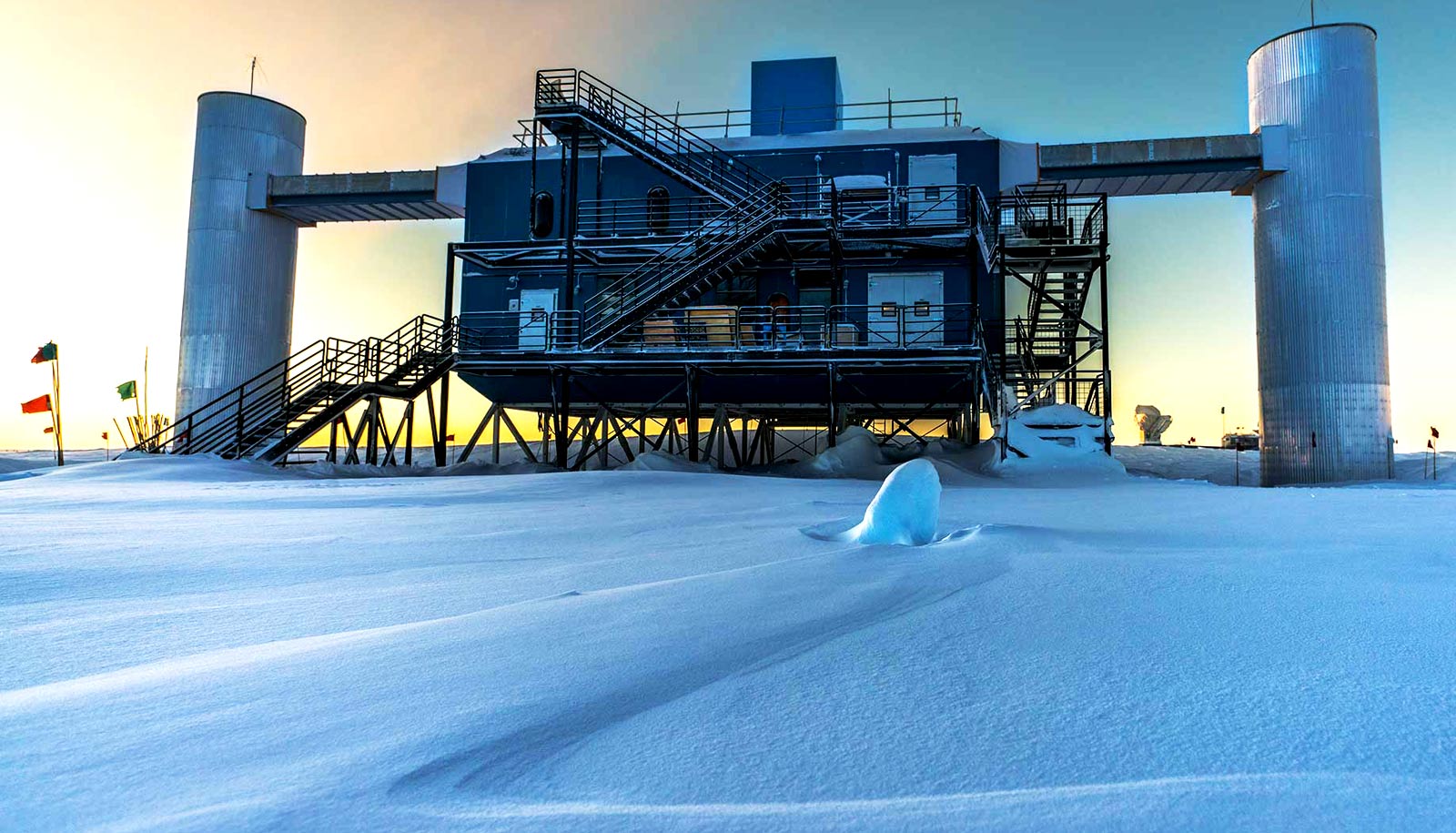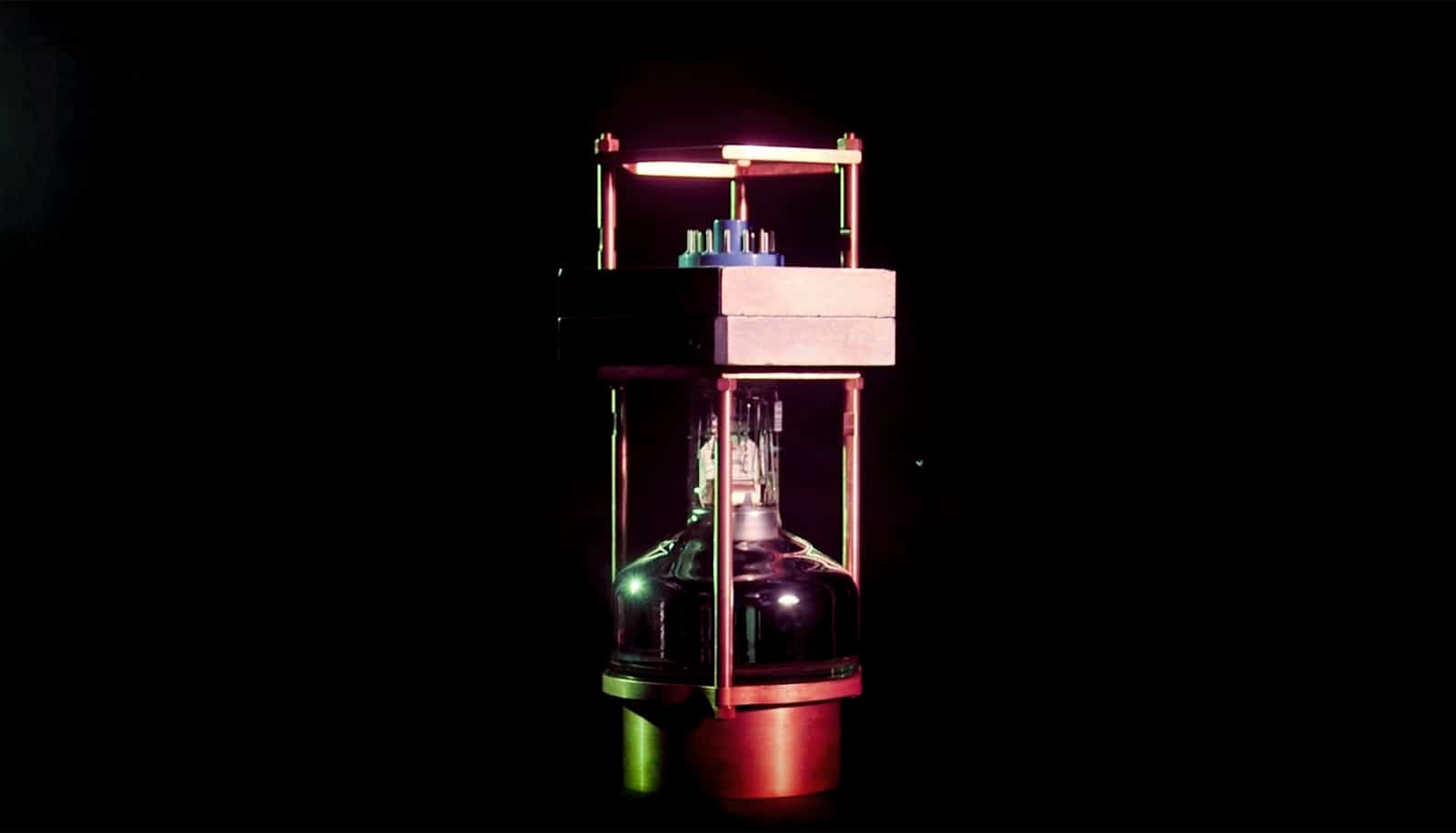New findings cut the mass range for the neutrino by more than half.
The estimated range for the rest mass of the neutrino is no larger than about 1 electron volt, or eV, report the scientists.
The finding marks an advance in the quest to measure the mass of the neutrino, one of the most abundant, yet elusive, elementary particles in our universe.
“Neutrinos are strange little particles.”
These inaugural results from the Karlsruhe Tritium Neutrino experiment—or KATRIN—lower the upper limit of the neutrino’s mass from 2 eV. The lower limit for the neutrino mass, 0.02 eV, was set by previous experiments by other groups.
“Knowing the mass of the neutrino will allow scientists to answer fundamental questions in cosmology, astrophysics, and particle physics, such as how the universe evolved or what physics exists beyond the Standard Model,” says Hamish Robertson, a KATRIN scientist and professor emeritus of physics at the University of Washington.
“These findings by the KATRIN collaboration reduce the previous mass range for the neutrino by a factor of two, place more stringent criteria on what the neutrino’s mass actually is, and provide a path forward to measure its value definitively.”
Elusive neutrinos
The KATRIN experiment is based at the Karlsruhe Institute of Technology in Germany and involves researchers at 20 research institutions around the world. The team reported the findings at the 2019 Topics in Astroparticle and Underground Physics conference in Toyama, Japan.
Neutrinos are abundant. They are one of the most common fundamental particles in our universe, second only to photons. Yet neutrinos are also elusive. They are neutral particles with no charge and they interact with other matter only through the aptly named “weak interaction,” which means that opportunities to detect neutrinos and measure their mass are both rare and difficult.
“If you filled the solar system with lead out to fifty times beyond the orbit of Pluto, about half of the neutrinos emitted by the sun would still leave the solar system without interacting with that lead,” says Robertson.
Neutrinos are also mysterious particles that have already shaken up physics, cosmology, and astrophysics. The Standard Model of particle physics had once predicted that neutrinos should have no mass. But by 2001, scientists had shown with two detectors, Super-Kamiokande and the Sudbury Neutrino Observatory, that they actually do have a nonzero mass—a breakthrough recognized in 2015 with a Nobel Prize in Physics.
So neutrinos have mass, but how much?
“Solving the mass of the neutrino would lead us into a brave new world of creating a new Standard Model,” says Peter Doe, research associate professor of physics.
Electron-neutrino pairs
The KATRIN discovery stems from direct, high-precision measurements of how a rare type of electron-neutrino pair share energy. This approach is the same as neutrino mass experiments from the 1990s and early 2000s in Mainz, Germany and Troitsk, Russia, both of which set the previous upper limit of the mass at 2 eV.
The heart of the KATRIN experiment is the source that generates electron-neutrino pairs: gaseous tritium, a highly radioactive isotope of hydrogen. As the tritium nucleus undergoes radioactive decay, it emits a pair of particles: one electron and one neutrino, both sharing 18,560 eV of energy.
KATRIN scientists cannot directly measure the neutrinos, but they can measure electrons, and try to calculate neutrino properties based on electron properties.
Most of the electron-neutrino pairs emitted by the tritium share their energy load equally. But in rare cases, the electron takes nearly all the energy—leaving only a tiny amount for the neutrino. Those rare pairs are what KATRIN scientists are after because—thanks to E = mc2—scientists know that the miniscule amount of energy left for the neutrino must include its rest mass. If KATRIN can accurately measure the electron’s energy, they can calculate the neutrino’s energy and therefore its mass.
The tritium source generates about 25 billion electron-neutrino pairs each second, only a fraction of which are pairs where the electron takes nearly all the decay energy. The KATRIN facility in Karlsruhe uses a complex series of magnets to channel the electron away from the tritium source and toward an electrostatic spectrometer, which measures the energy of the electrons with high precision.
An electric potential within the spectrometer creates an “energy gradient” that electrons must “climb” in order to pass through the spectrometer for detection. Adjusting the electric potential allows scientists to study the rare, high-energy electrons, which carry information concerning the neutrino mass.
Sterile neutrinos and dark matter
With tritium data acquisition now underway, US institutions involved in the project are focused on analyzing these data to further improve our understanding of neutrino mass. These efforts may also reveal the existence of sterile neutrinos, a possible candidate for the dark matter that, though accounting for 85% of the matter in the universe, remains undetected.
Now that KATRIN scientists have set a new upper limit for the mass of the neutrino, project scientists are working to narrow the range even further.
“Neutrinos are strange little particles,” says Doe. “They’re so ubiquitous, and there’s so much we can learn once we determine this value.”
The US Department of Energy’s Office of Nuclear Physics has funded US participation in the KATRIN experiment since 2007. Additional US institutions involved in the project at Carnegie Mellon University, the University of North Carolina at Chapel Hill, Massachusetts Institute of Technology, the Lawrence Berkeley National Laboratory, and Case Western Reserve University.
Source: University of Washington



